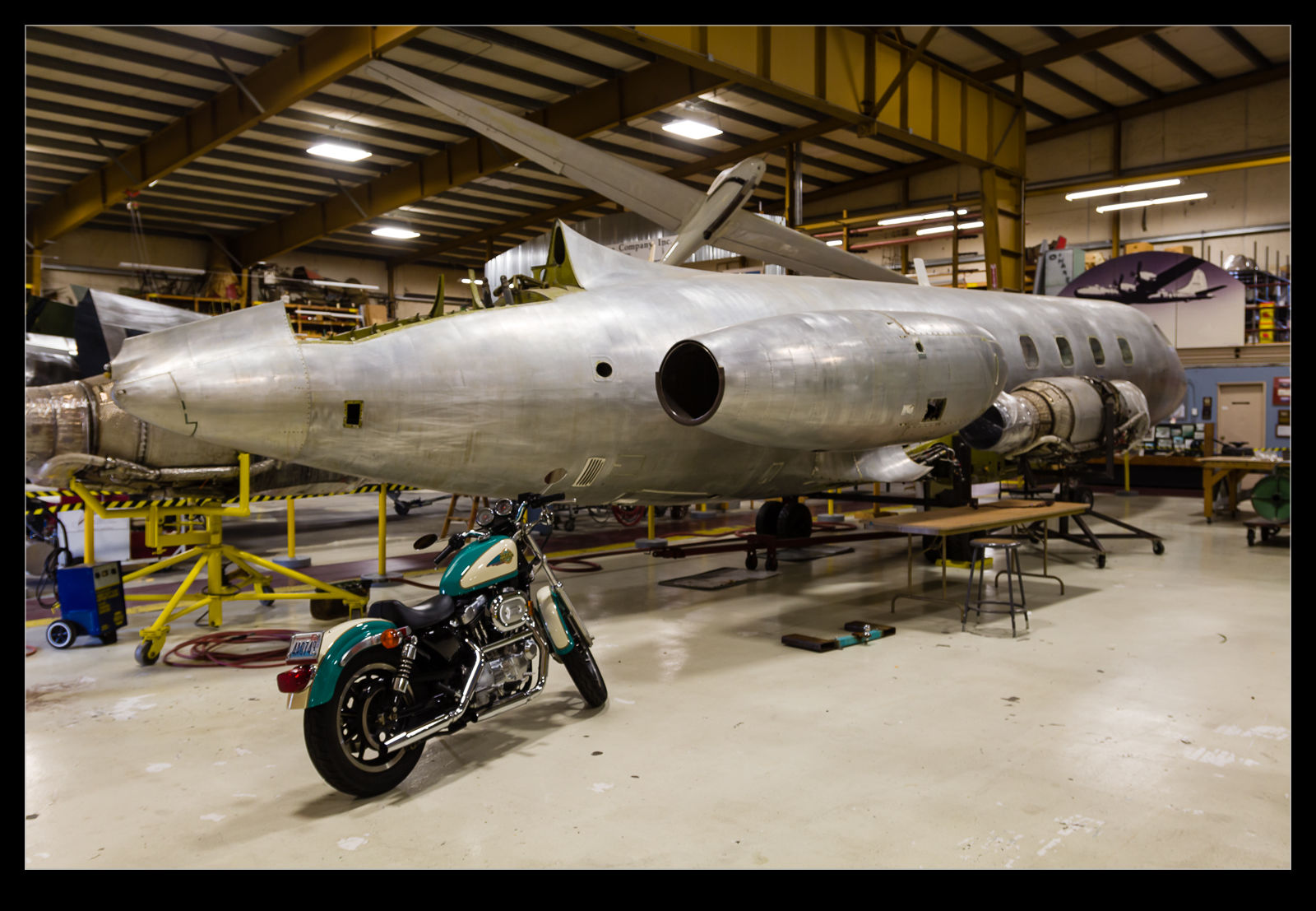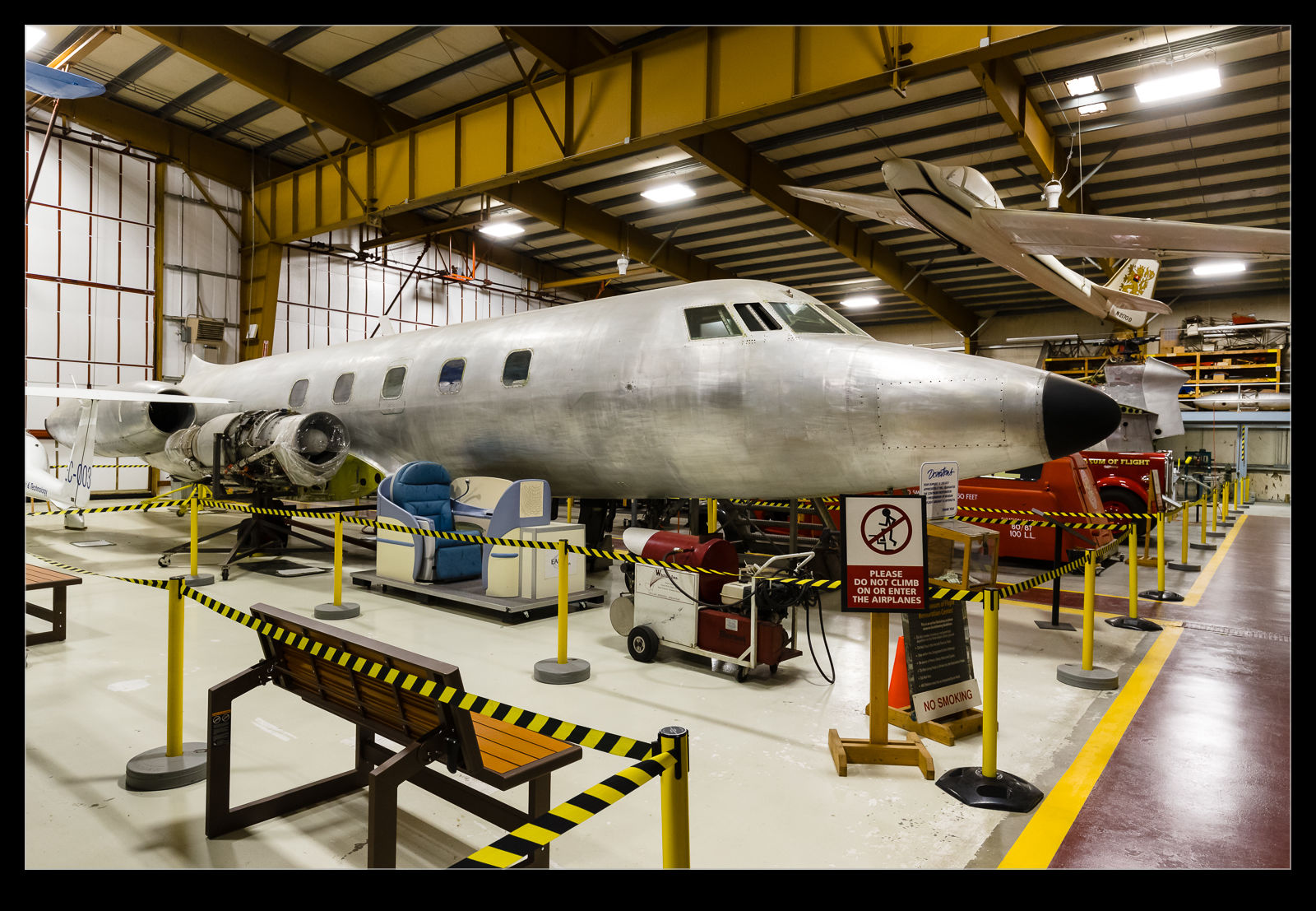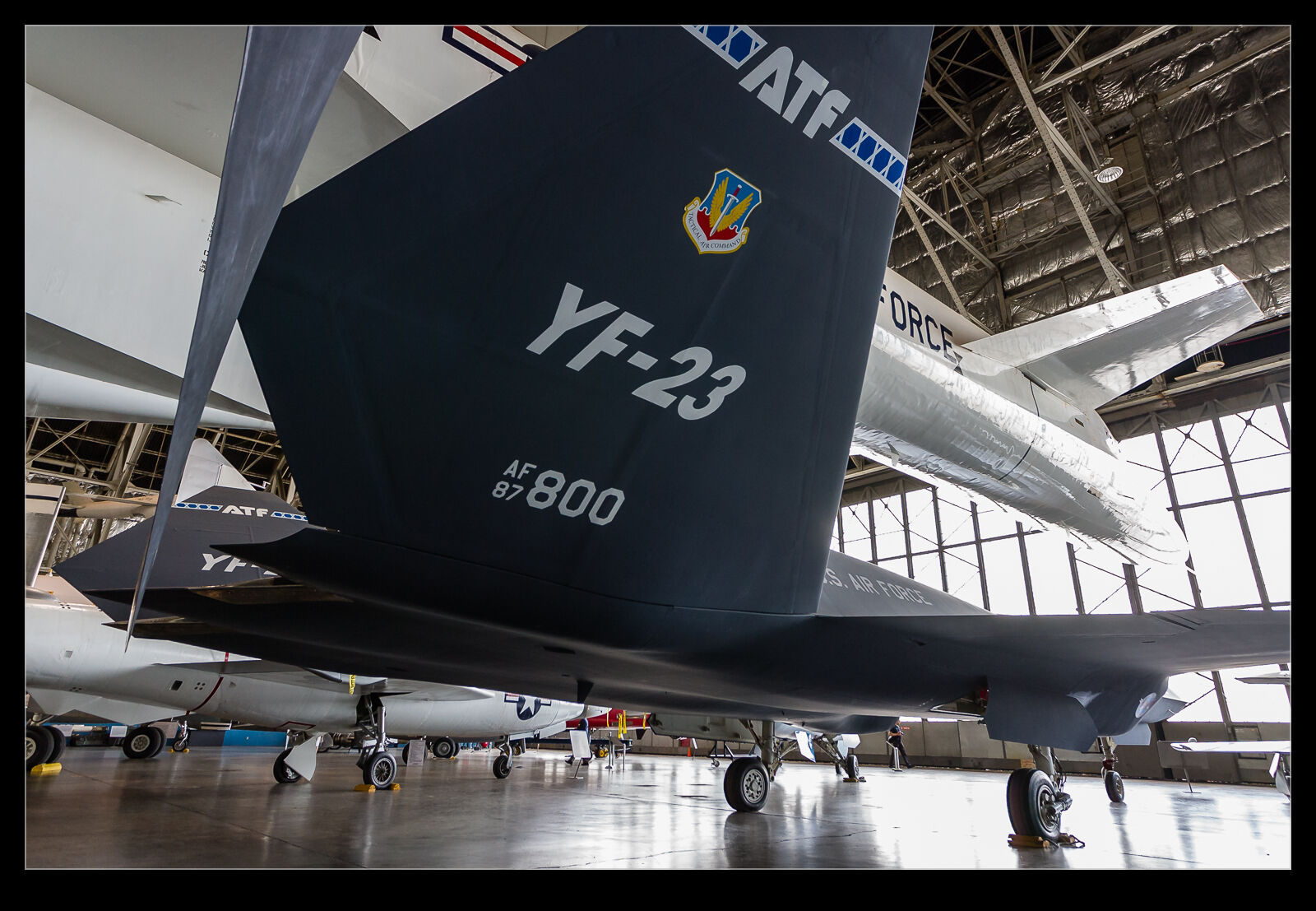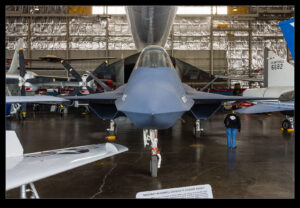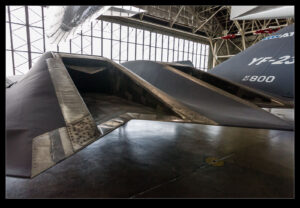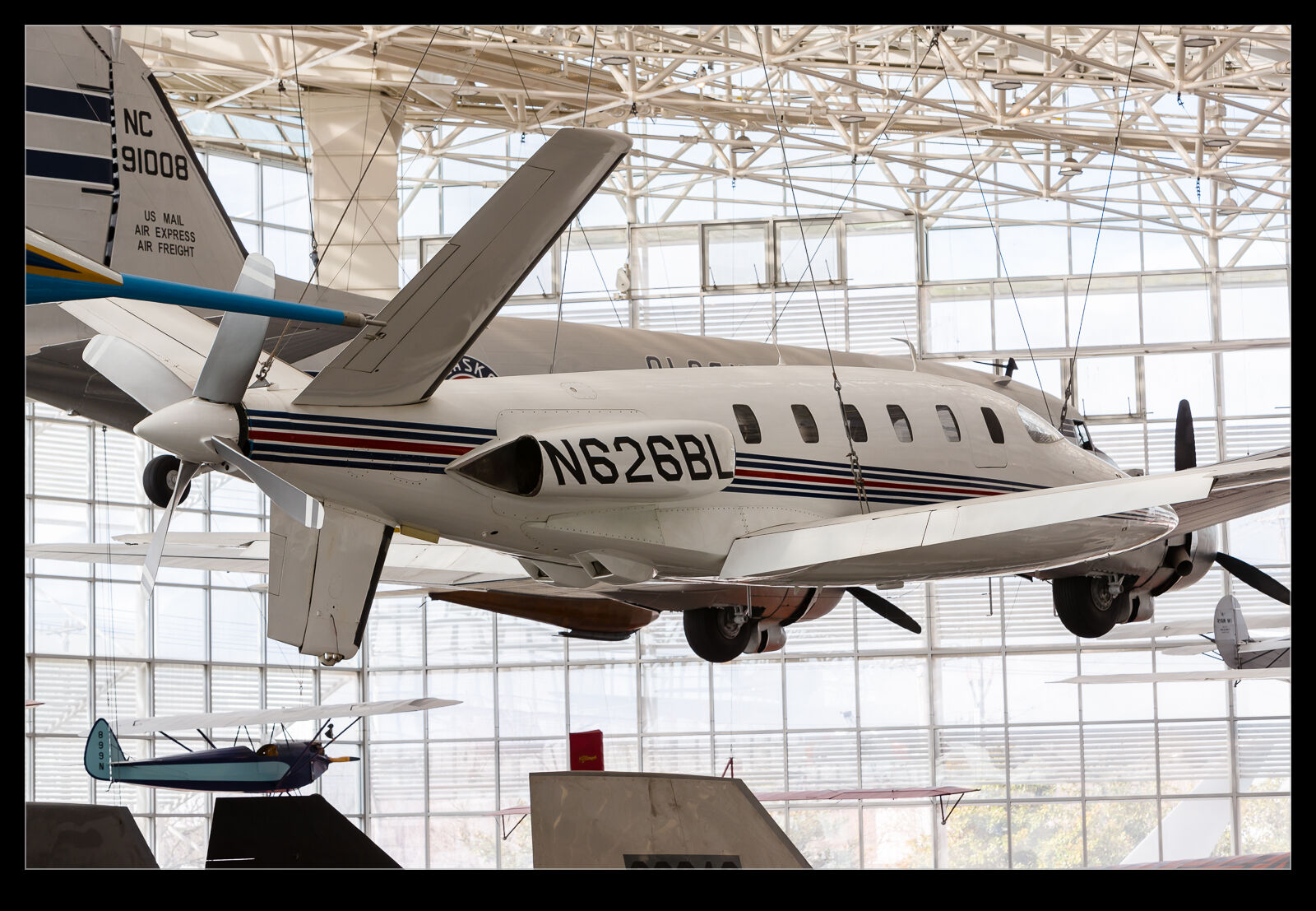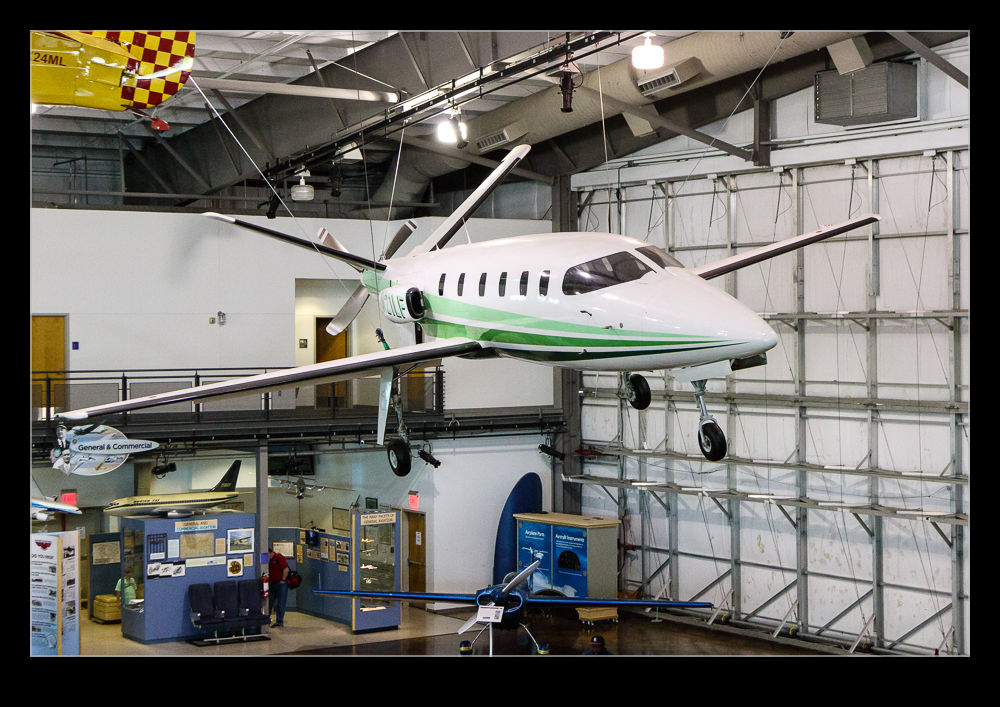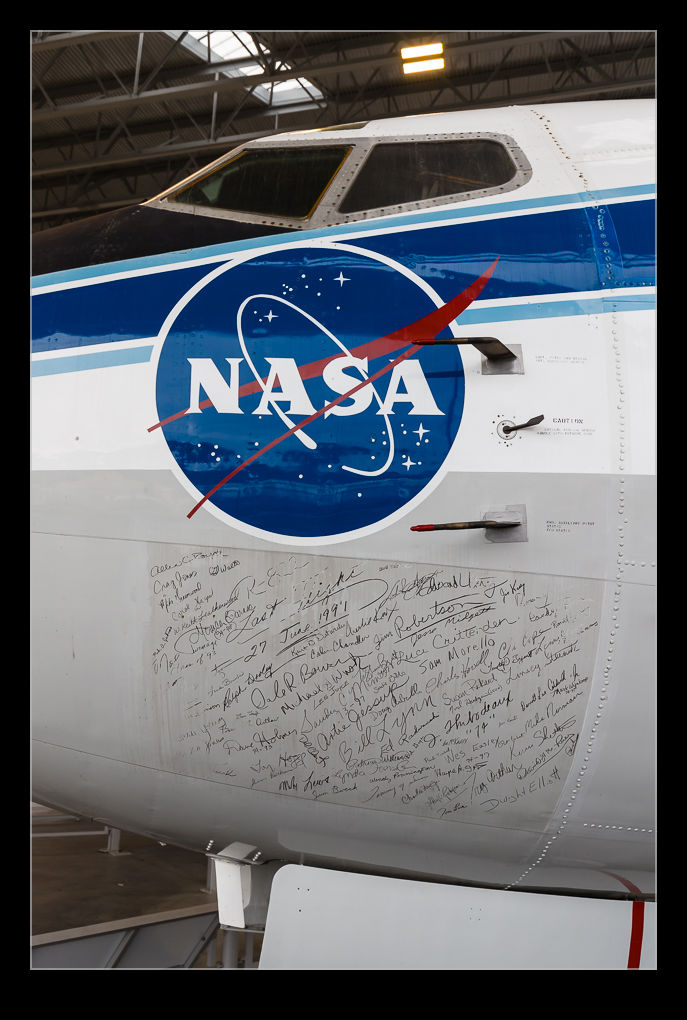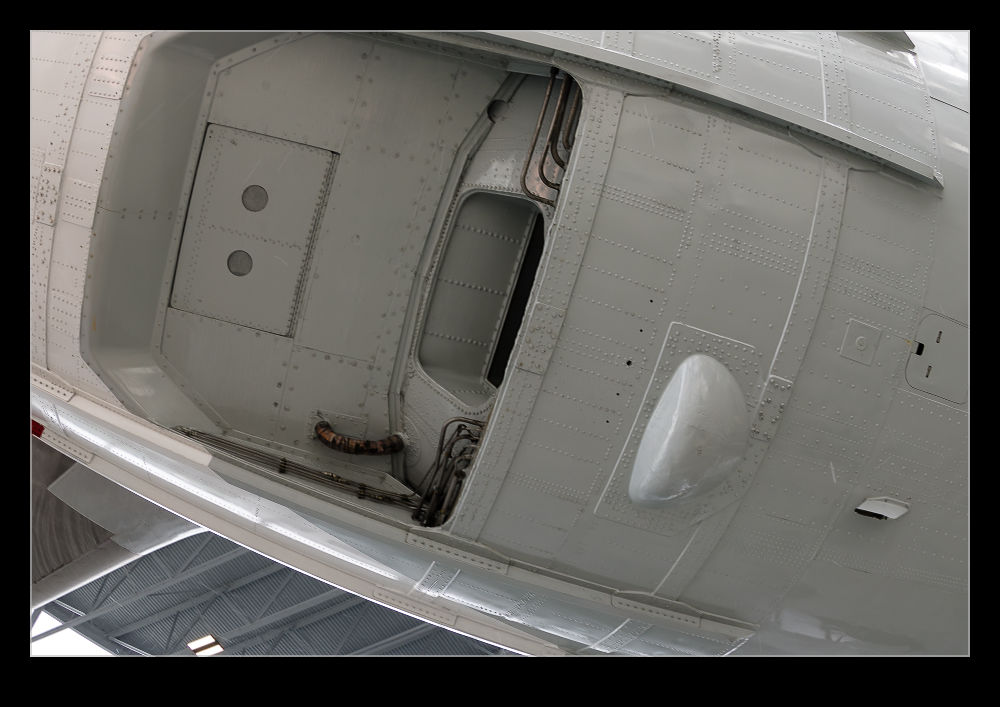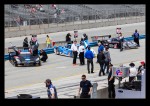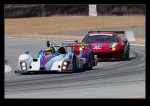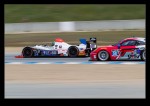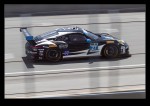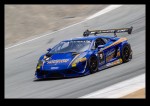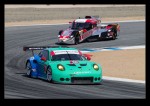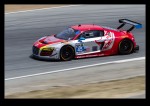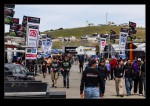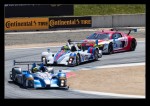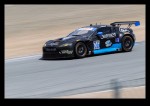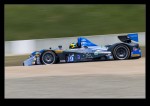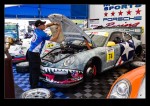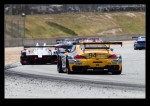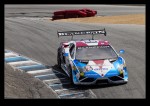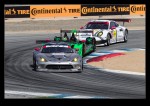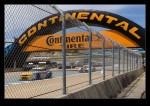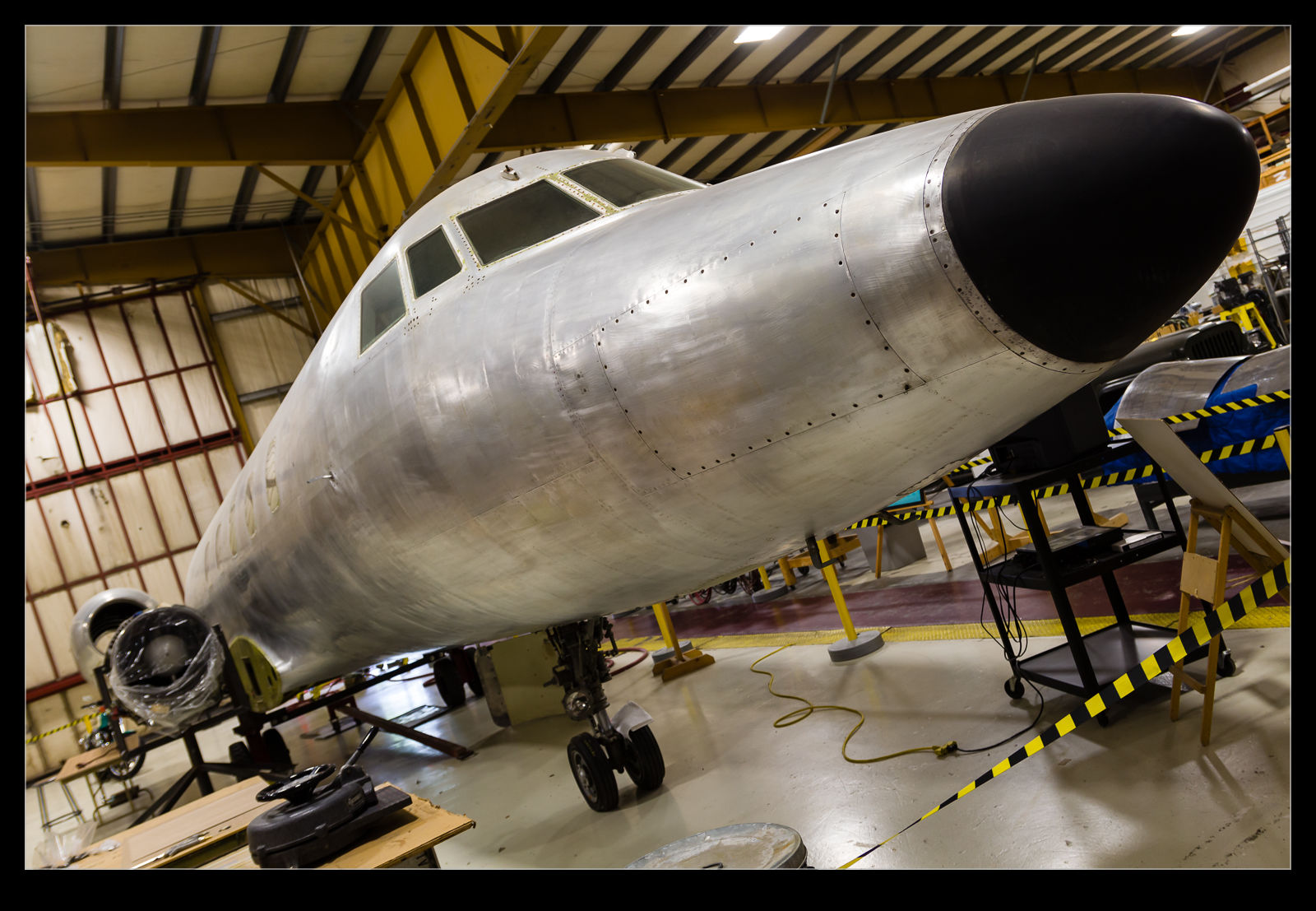 I’ve seen the JetStar prototype a few times in various visits to the Museum of Flight restoration facility up at Paine Field. The JetStar is a favorite of mine as might be determined by several of my posts over the years. The prototype is a bit different, though. It was built with two engines – Bristol Orpheus turbojets. After the first two aircraft, the rest were four engined. After it finished testing, it was used by Lockheed for transport duties. It ended up in Vancouver before coming into the museum’s collection. These shots are of it in the restoration shop.
I’ve seen the JetStar prototype a few times in various visits to the Museum of Flight restoration facility up at Paine Field. The JetStar is a favorite of mine as might be determined by several of my posts over the years. The prototype is a bit different, though. It was built with two engines – Bristol Orpheus turbojets. After the first two aircraft, the rest were four engined. After it finished testing, it was used by Lockheed for transport duties. It ended up in Vancouver before coming into the museum’s collection. These shots are of it in the restoration shop.
Tag Archives: prototype
YF-23
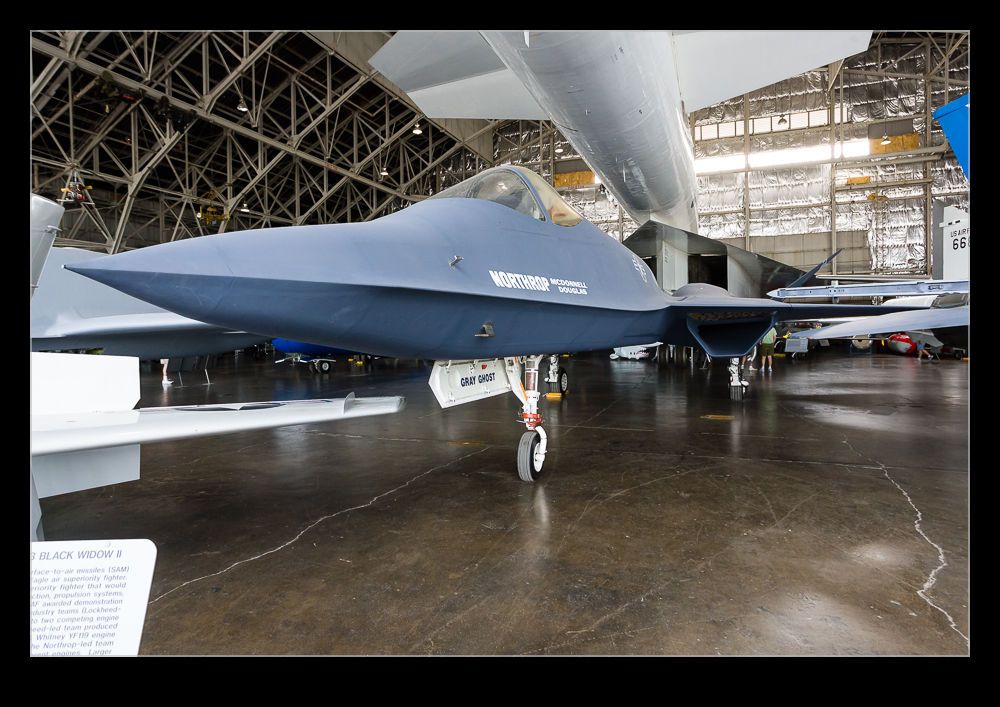 A YouTube video showed up in my feed recently that involved the Northrop YF-23. I have only seen one of the prototypes. The one at Torrance has eluded me so far but I did get to see the one in the Experimental hangar at the Museum of the USAF at Wright Patterson. I think things have been rearranged a lot since I was last there with new hangars having been opened but, when I visited, the hangar was a pretty cramped experience. Getting a good view of the aircraft was tricky. The YF-23 is a fascinating looking airframe with some very unusual shaping so I tried to get shots that emphasized this instead. If I could have another crack at photographing it, that would be great.
A YouTube video showed up in my feed recently that involved the Northrop YF-23. I have only seen one of the prototypes. The one at Torrance has eluded me so far but I did get to see the one in the Experimental hangar at the Museum of the USAF at Wright Patterson. I think things have been rearranged a lot since I was last there with new hangars having been opened but, when I visited, the hangar was a pretty cramped experience. Getting a good view of the aircraft was tricky. The YF-23 is a fascinating looking airframe with some very unusual shaping so I tried to get shots that emphasized this instead. If I could have another crack at photographing it, that would be great.
XF8U-1
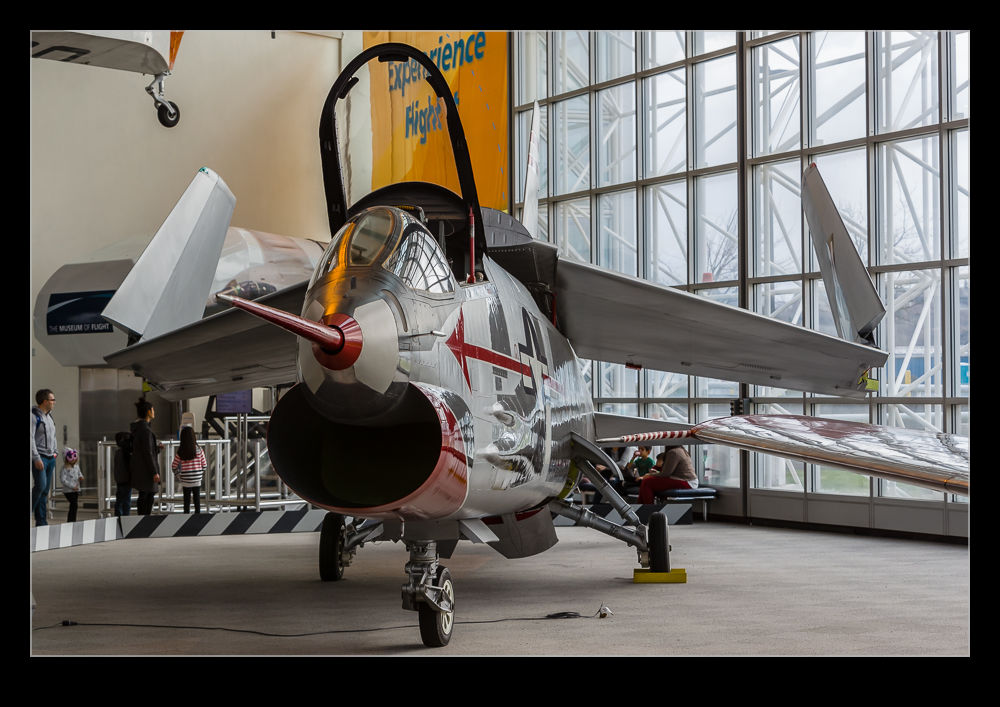 I certainly won’t stand out from the crowd by claiming that I am a bit of a fan of the F-8 Crusader. Plenty of people think it is a cracking jet. I didn’t get to see many of them. French Navy jets were still in service and, while the RF-8s were in use with the Navy at the beginning of my interest in aviation, I don’t think I ever saw in in service example. Doesn’t stop me liking them though. The Museum of Flight has the prototype jet in their collection. Prior to the unification of the type identifiers between the services, it was known as the XF8U-1.
I certainly won’t stand out from the crowd by claiming that I am a bit of a fan of the F-8 Crusader. Plenty of people think it is a cracking jet. I didn’t get to see many of them. French Navy jets were still in service and, while the RF-8s were in use with the Navy at the beginning of my interest in aviation, I don’t think I ever saw in in service example. Doesn’t stop me liking them though. The Museum of Flight has the prototype jet in their collection. Prior to the unification of the type identifiers between the services, it was known as the XF8U-1.
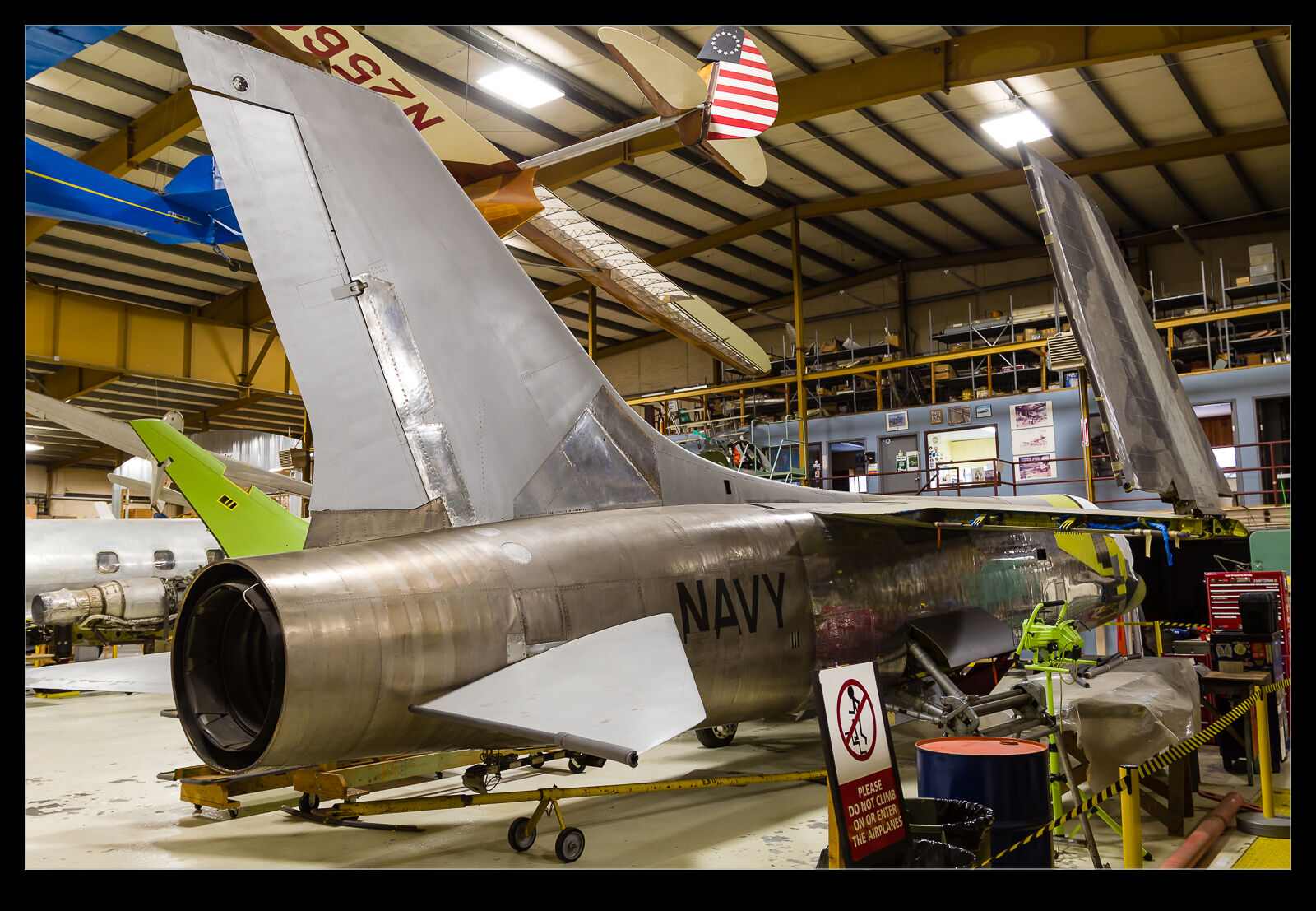 I first saw it while it was undergoing restoration at the museum’s facility at Paine Field. My first visit there was when it was free. You could just show up and wander around. Now you have to pay to get in but it is still a good visit to make. Restoration is when things are a lot less glamorous but you do see the work underway to makes things look great.
I first saw it while it was undergoing restoration at the museum’s facility at Paine Field. My first visit there was when it was free. You could just show up and wander around. Now you have to pay to get in but it is still a good visit to make. Restoration is when things are a lot less glamorous but you do see the work underway to makes things look great.
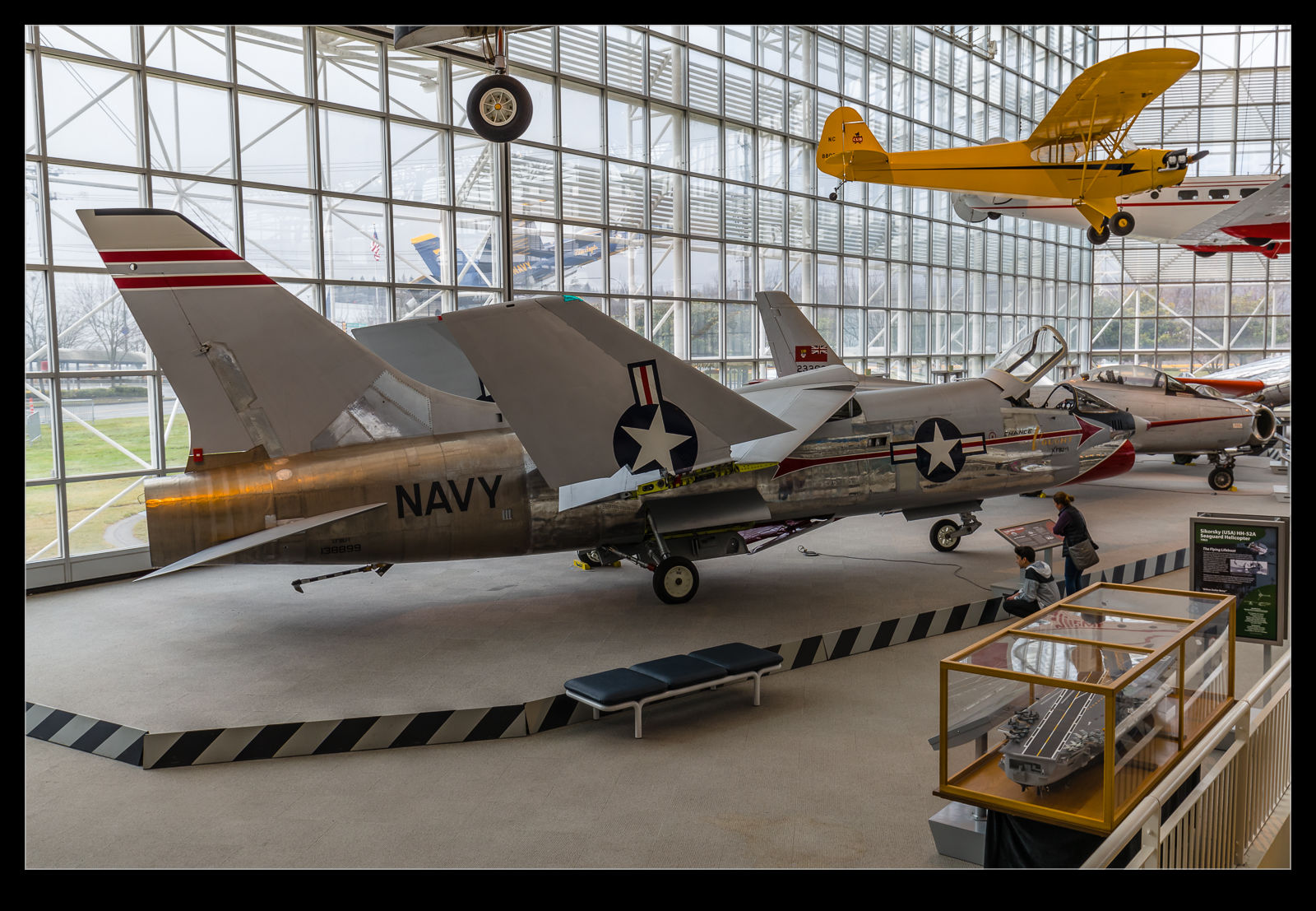 Now the jet has been moved to the main museum facility at Boeing Field. It is polished to a fine finish and is complete with an air data boom. The markings it carries appear to be authentic based on some original photos of the aircraft and, with its location close to the window, it does gleam nicely. Oh to find someone with a lot of money and a desire to have one of these jets airworthy again.
Now the jet has been moved to the main museum facility at Boeing Field. It is polished to a fine finish and is complete with an air data boom. The markings it carries appear to be authentic based on some original photos of the aircraft and, with its location close to the window, it does gleam nicely. Oh to find someone with a lot of money and a desire to have one of these jets airworthy again.
Lear Fans
 Early efforts at composite business aircraft did not go smoothly. The Beech Starship ended up being a burden on the company and they bought most of the planes back and destroyed them. Prior to the Starship, there was the Lear Fan. A project started by Bill Lear and continued after his death, the idea was a composite aircraft with two engines driving a single pusher propeller. The light airframe and plenty of power was to provide great performance. Sadly, the early approach to composite design did not go smoothly, nor did the gearbox design to combine the two engines to one propeller.
Early efforts at composite business aircraft did not go smoothly. The Beech Starship ended up being a burden on the company and they bought most of the planes back and destroyed them. Prior to the Starship, there was the Lear Fan. A project started by Bill Lear and continued after his death, the idea was a composite aircraft with two engines driving a single pusher propeller. The light airframe and plenty of power was to provide great performance. Sadly, the early approach to composite design did not go smoothly, nor did the gearbox design to combine the two engines to one propeller.
 The project folded after three prototypes had been built. All three still remain and I have seen two of the three. One lives in the Museum of Flight here in Seattle while another is in the Frontiers of Flight Museum at Love Field in Dallas. The third one is in Oklahoma City so I am a bit annoyed I never knew that when I traveled there regularly. Still, two out of three isn’t bad. The single prop looks pretty chunky (the idea being that single engine handling was identical to twin engine handling) and I imagine the diameter had to be limited to avoid prop strike issues during rotation. Overall, it is quite a neat looking design. A shame it was a bit ahead of the technology curve when it was designed and built.
The project folded after three prototypes had been built. All three still remain and I have seen two of the three. One lives in the Museum of Flight here in Seattle while another is in the Frontiers of Flight Museum at Love Field in Dallas. The third one is in Oklahoma City so I am a bit annoyed I never knew that when I traveled there regularly. Still, two out of three isn’t bad. The single prop looks pretty chunky (the idea being that single engine handling was identical to twin engine handling) and I imagine the diameter had to be limited to avoid prop strike issues during rotation. Overall, it is quite a neat looking design. A shame it was a bit ahead of the technology curve when it was designed and built.
The First 737
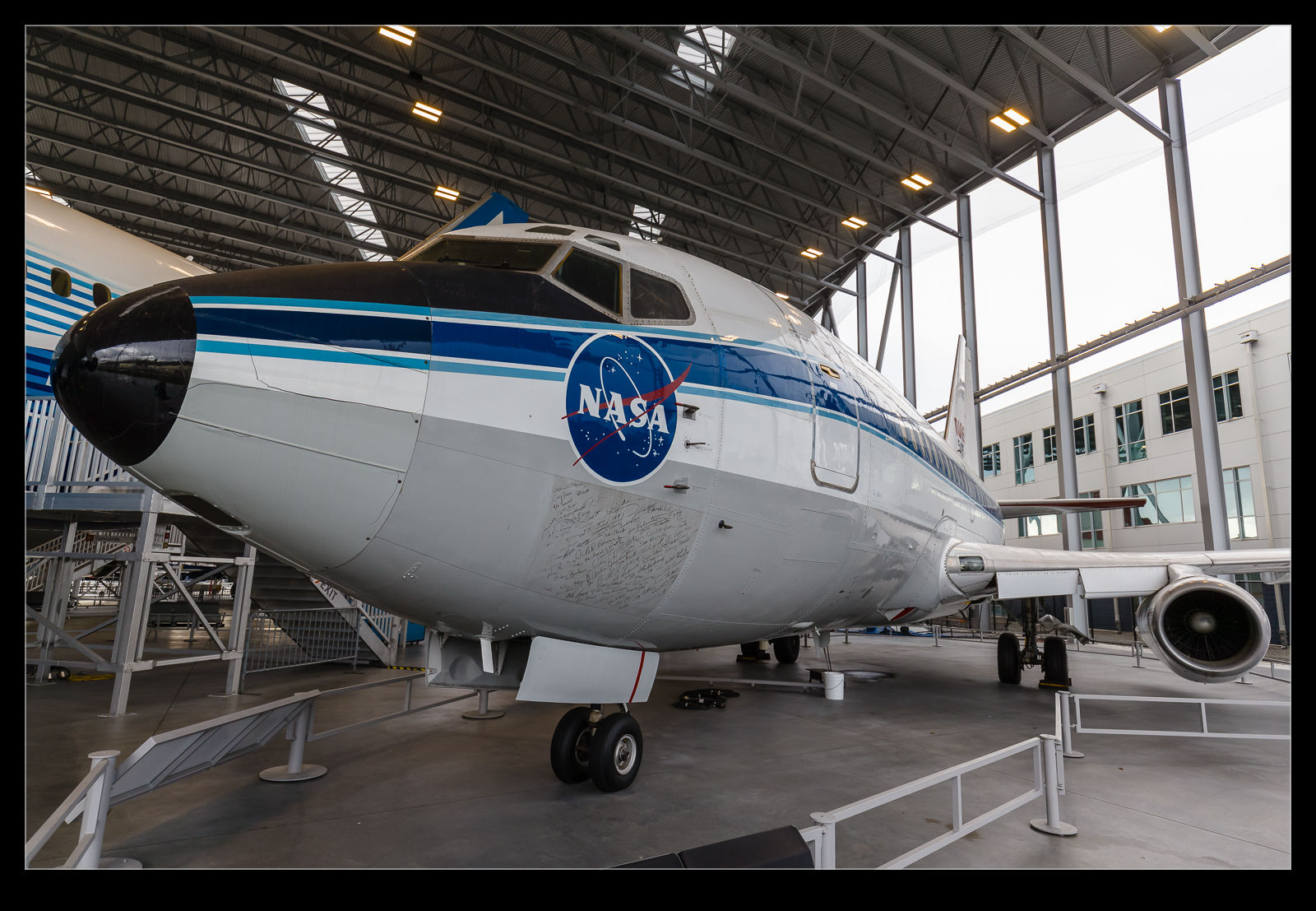 The Museum of Flight has a number of prototypes of Boeing airliners. They have the first Boeing 737. This is a 737-100. Very few of these were built with the 200 series being introduced soon and then taking over completely until the introduction of the 300 series many years later. (For those of us of a certain age, the 200 series was known as the Classic once the 300/400/500s came into service. Today they are often called Classic when compared to the NG models which are, themselves, now being superseded by the Max.)
The Museum of Flight has a number of prototypes of Boeing airliners. They have the first Boeing 737. This is a 737-100. Very few of these were built with the 200 series being introduced soon and then taking over completely until the introduction of the 300 series many years later. (For those of us of a certain age, the 200 series was known as the Classic once the 300/400/500s came into service. Today they are often called Classic when compared to the NG models which are, themselves, now being superseded by the Max.)
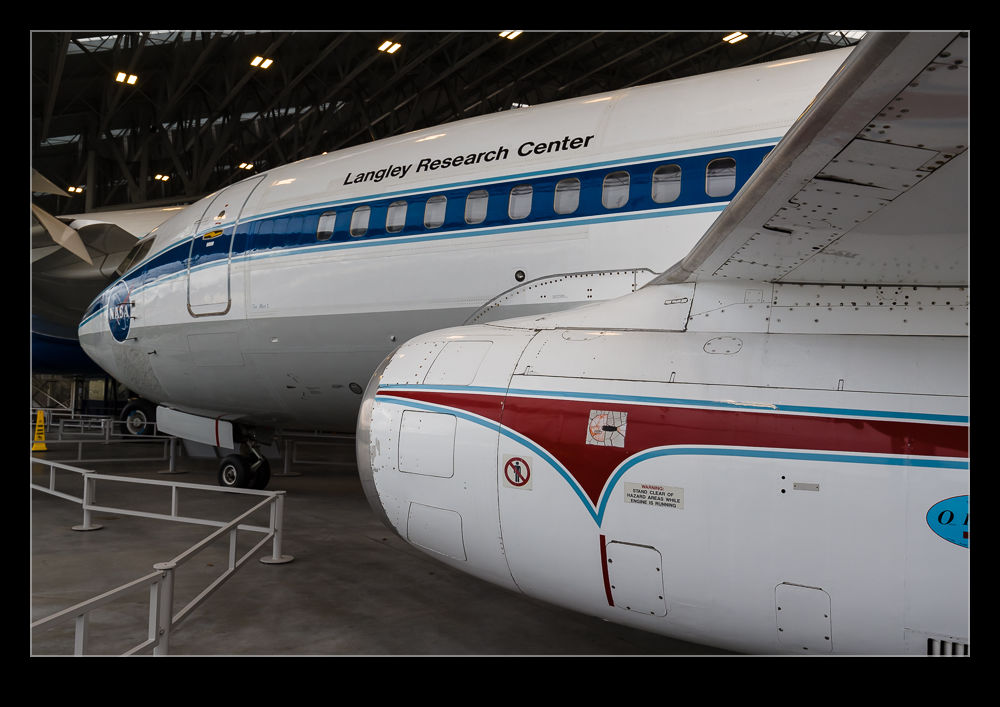 The first airframe ended up with NASA being used for testing duties of all types. At the end of its testing career with NASA, it made its way back to Boeing Field and to the Museum of Flight’s outside collection. These are now under cover with a roof having been built over the many aircraft. The 200 series is a pretty short jet but the 100 is even more so. It is quite something to see this aircraft and compare it to the big aircraft that are now the staple of Boeing’s output. The Max 10 will be nearly 50% longer than the original.
The first airframe ended up with NASA being used for testing duties of all types. At the end of its testing career with NASA, it made its way back to Boeing Field and to the Museum of Flight’s outside collection. These are now under cover with a roof having been built over the many aircraft. The 200 series is a pretty short jet but the 100 is even more so. It is quite something to see this aircraft and compare it to the big aircraft that are now the staple of Boeing’s output. The Max 10 will be nearly 50% longer than the original.
The aircraft is displayed in its NASA colors rather than the original in-house colors when it was first built. Also, since NASA used it for a variety of odd tests, it has a bunch of additions from those test activities. Since it is parked in amongst the 787 and 747 test aircraft and is kept at the far end of the space, it is a little lost I feel. However, when you contemplate its place in the history of airliner development, it really is a very significant plane. There was a time when Boeing contemplated selling the whole program. How different things could have been!
Boomer Position in a 747
 If you think of aerial refueling tankers, the Boeing 747 is not going to be the first plane that jumps to mind. However, a tanker version of the 747 was developed and is in service to this day in Iran. I haven’t seen one of those planes but, before they were built, Boeing undertook testing of the configuration on their testbed, the original 747 prototype. This is on display at the Museum of Flight in Seattle. When we were walking through the fuselage, we got to the read and found the boomer station. Apparently, it was not removed after installation. It looks remarkably similar to that from a KC-135 so I guess they ported the design across rather than come up with something significantly different.
If you think of aerial refueling tankers, the Boeing 747 is not going to be the first plane that jumps to mind. However, a tanker version of the 747 was developed and is in service to this day in Iran. I haven’t seen one of those planes but, before they were built, Boeing undertook testing of the configuration on their testbed, the original 747 prototype. This is on display at the Museum of Flight in Seattle. When we were walking through the fuselage, we got to the read and found the boomer station. Apparently, it was not removed after installation. It looks remarkably similar to that from a KC-135 so I guess they ported the design across rather than come up with something significantly different.
Laguna Seca
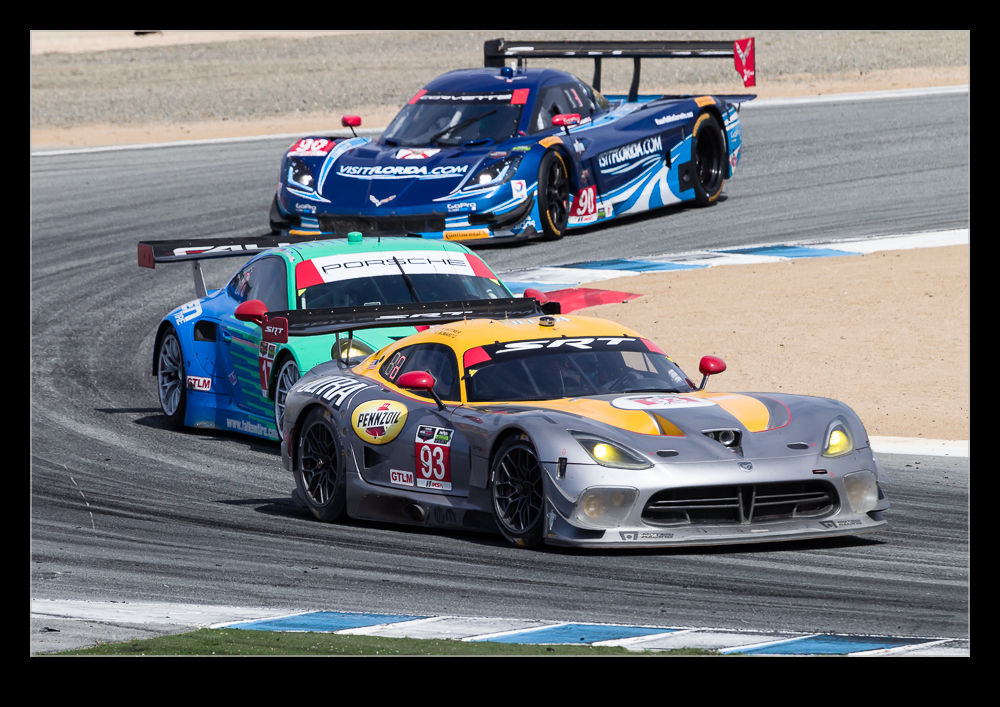 When we lived in Chicago, I enjoyed taking trips to the various motor racing venues nearby. The move west has not taken away the options. There are two race tracks within easy reach. Sonoma Raceway is less than an hour from us and just over an hour and a half in the opposite direction is Laguna Seca. They were hosting a big race weekend and we decided to take in the final day.
When we lived in Chicago, I enjoyed taking trips to the various motor racing venues nearby. The move west has not taken away the options. There are two race tracks within easy reach. Sonoma Raceway is less than an hour from us and just over an hour and a half in the opposite direction is Laguna Seca. They were hosting a big race weekend and we decided to take in the final day.
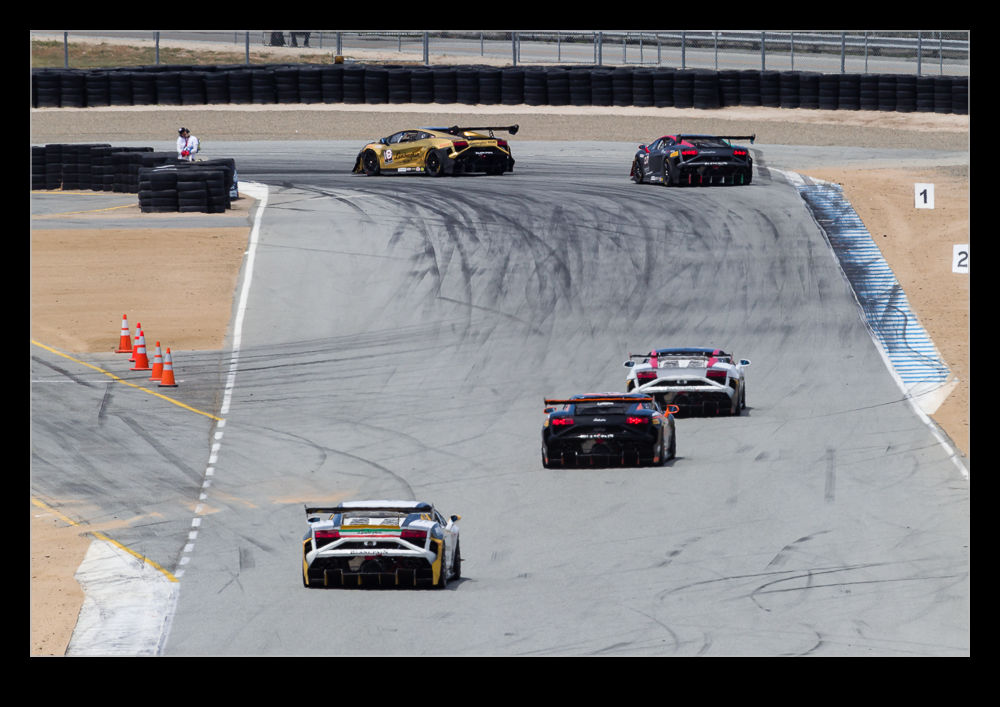 The main race was a combination of two classes from previous years. American Le Mans and GT cars were in a new format this year and this was to be the prime event of a weekend of racing. There were also other support races taking part. We arrived mid-morning and the racing was already underway. A lower class race involving prototype and GT cars was in full swing and we settled down to watch some of the action.
The main race was a combination of two classes from previous years. American Le Mans and GT cars were in a new format this year and this was to be the prime event of a weekend of racing. There were also other support races taking part. We arrived mid-morning and the racing was already underway. A lower class race involving prototype and GT cars was in full swing and we settled down to watch some of the action.
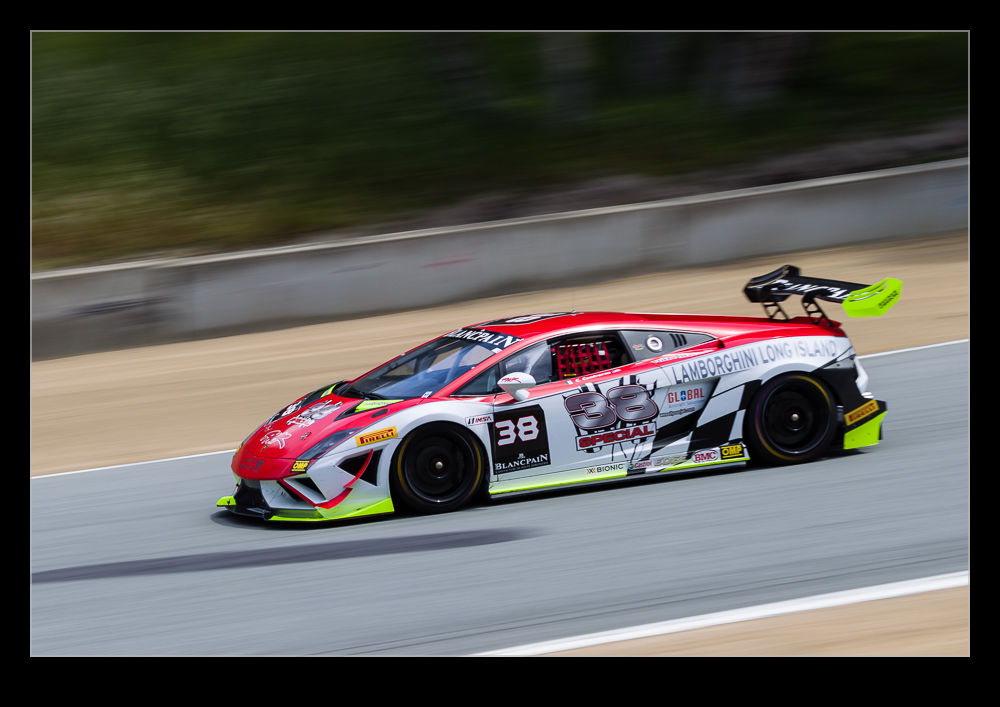 I had not gone primarily to take pictures but I had taken along some gear. Shooting at race tracks is a mixed business. The best spots are usually in areas that are restricted and only accredited media are allowed in there. However, you can find good angles but just need longer lenses to get the shots. Sun on race tracks does tend to lead to heat haze so there is a limit on what you can get.
I had not gone primarily to take pictures but I had taken along some gear. Shooting at race tracks is a mixed business. The best spots are usually in areas that are restricted and only accredited media are allowed in there. However, you can find good angles but just need longer lenses to get the shots. Sun on race tracks does tend to lead to heat haze so there is a limit on what you can get.
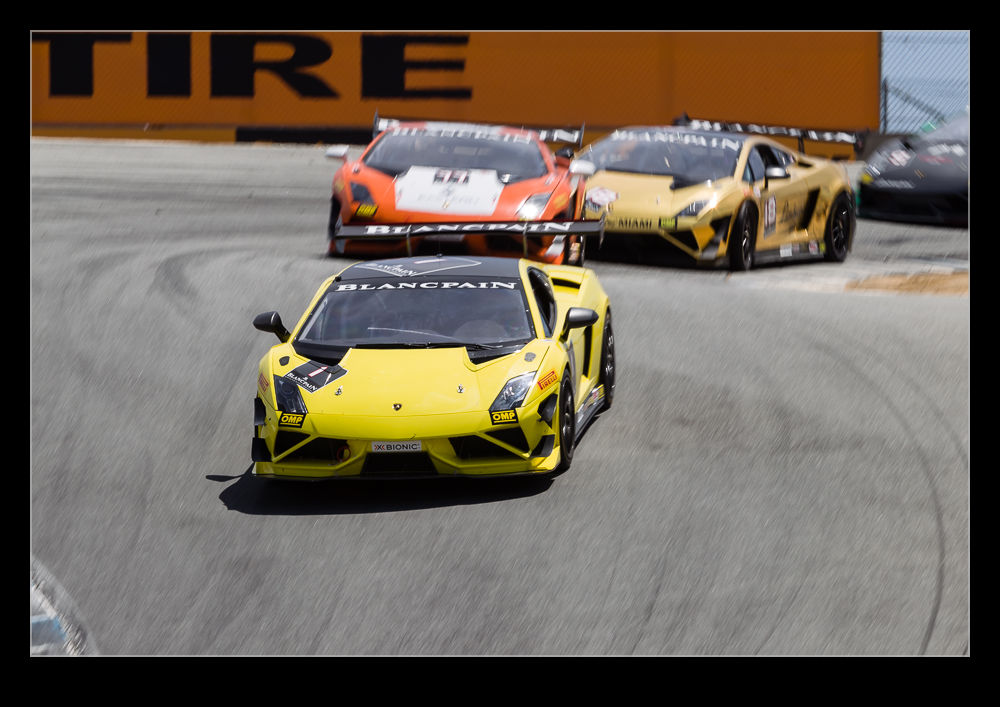 Add to this that the areas that get you closest to the track are well protected and you have fence to shoot through. There is nothing you can do about this. However, I did figure that going with as low a shutter speed as possible in these cases would tend to blur out a lot of the fencing and reduce its impact. However, a fence post will still be conspicuous in the shot and you have a low keeper rate given the shutter speeds and the pace with which they are passing you.
Add to this that the areas that get you closest to the track are well protected and you have fence to shoot through. There is nothing you can do about this. However, I did figure that going with as low a shutter speed as possible in these cases would tend to blur out a lot of the fencing and reduce its impact. However, a fence post will still be conspicuous in the shot and you have a low keeper rate given the shutter speeds and the pace with which they are passing you.
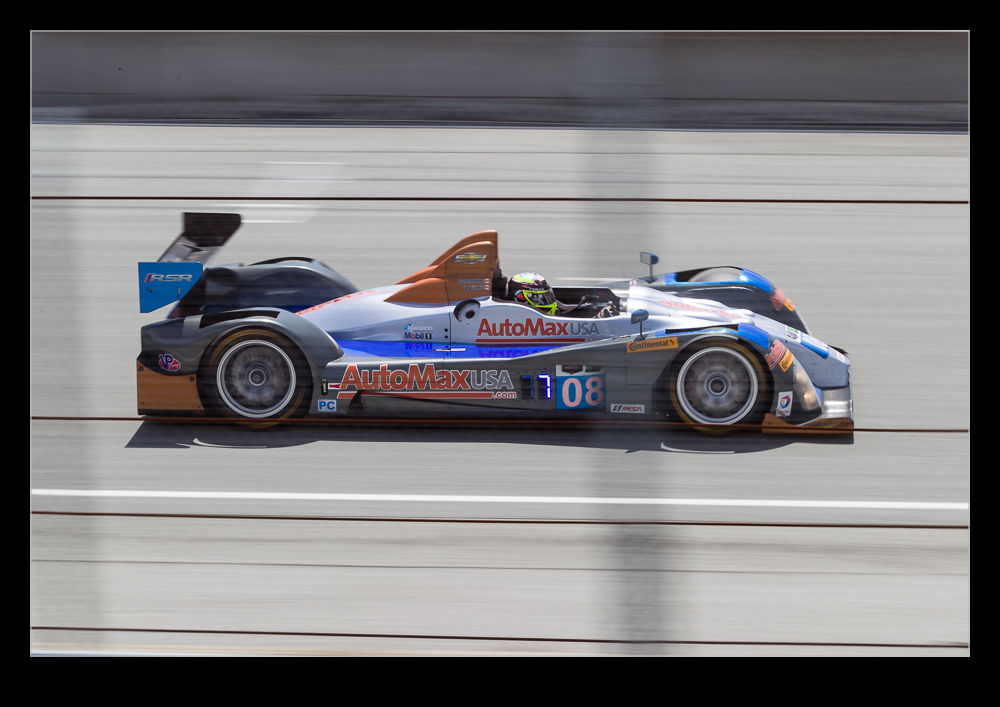 The thing with shooting motor sports is to try and emphasize the speed. There are some angles that look dynamic anyway but a lot of time, if the car is frozen, there is no impact to the shot. At least the wheels have to be blurred and preferably the background. It is always a compromise but it does make for some good challenges.
The thing with shooting motor sports is to try and emphasize the speed. There are some angles that look dynamic anyway but a lot of time, if the car is frozen, there is no impact to the shot. At least the wheels have to be blurred and preferably the background. It is always a compromise but it does make for some good challenges.
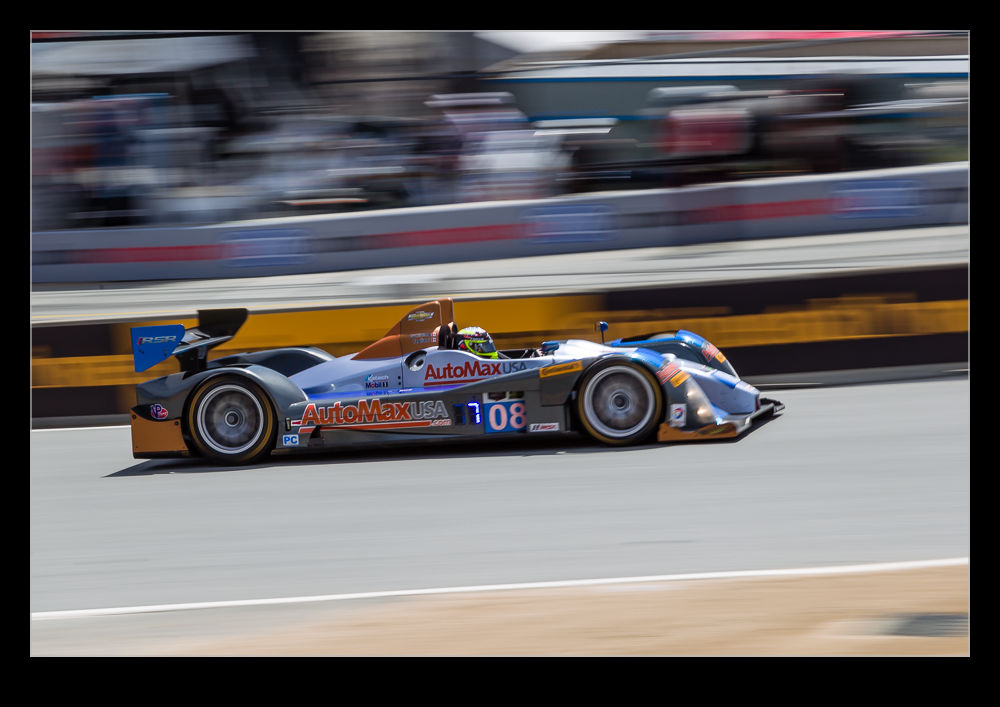 There were some interesting cars to be seen. Even as we walked to the stands, there was a lineup of a couple of dozen Ferraris. Quite a lot of money stored in that line. One of them was an Enzo. I have only seen those a couple of times. There was also a cool looking prototype car called the Deltawing. For some reason it did not start the race with the other cars so it spent the entire race working its way up through the field. It was certainly a curious looking beast.
There were some interesting cars to be seen. Even as we walked to the stands, there was a lineup of a couple of dozen Ferraris. Quite a lot of money stored in that line. One of them was an Enzo. I have only seen those a couple of times. There was also a cool looking prototype car called the Deltawing. For some reason it did not start the race with the other cars so it spent the entire race working its way up through the field. It was certainly a curious looking beast.
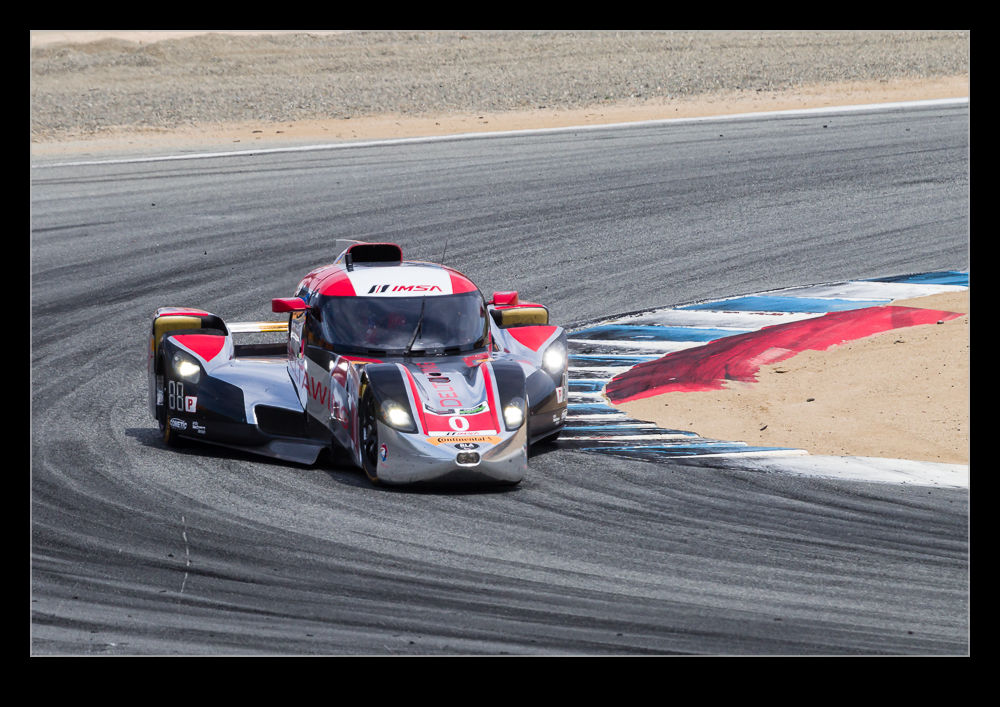 The most famous part of the track is the Corkscrew. This is a ridge followed by a tight left-hander that drops down the side of the hill and cuts back right. It is a tricky turn and I imagine is quite something to do at speed. The layout of the hillside makes it a great place to watch the cars come by and we weren’t alone in stopping off there. A class of Lamborghinis was racing while there and they provided a lot of entertainment as there seemed to be some closely matched groups hounding each other around the circuit.
The most famous part of the track is the Corkscrew. This is a ridge followed by a tight left-hander that drops down the side of the hill and cuts back right. It is a tricky turn and I imagine is quite something to do at speed. The layout of the hillside makes it a great place to watch the cars come by and we weren’t alone in stopping off there. A class of Lamborghinis was racing while there and they provided a lot of entertainment as there seemed to be some closely matched groups hounding each other around the circuit.
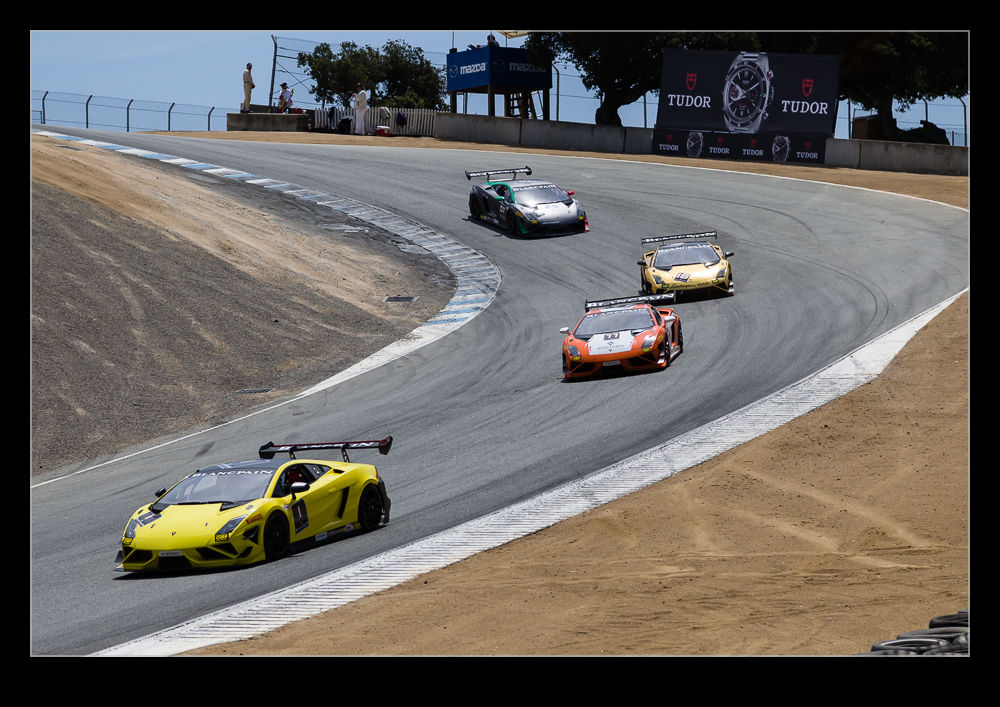 The place is great for watching racing and, even during a busy event, you never felt too crowded. Even walking through the paddock was a relaxed thing to do. They did open the hot pits ahead of the final race and that did look pretty jammed but we chose to head elsewhere ahead of the main race. I will definitely go back and would recommend it to anyone interested in motor racing and maybe even those who had not through they were. Our entire group had a great day.
The place is great for watching racing and, even during a busy event, you never felt too crowded. Even walking through the paddock was a relaxed thing to do. They did open the hot pits ahead of the final race and that did look pretty jammed but we chose to head elsewhere ahead of the main race. I will definitely go back and would recommend it to anyone interested in motor racing and maybe even those who had not through they were. Our entire group had a great day.
